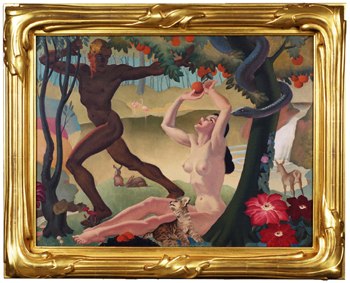Product Description
Hunt and Roskell in alliance with J. W. Benson 18k gold pomander / vinaigrette in the form of an apple, marked, original red leather box, c. 1897



Hunt and Roskell in alliance with J. W. Benson 18k gold pomander / vinaigrette in the form of an apple, Marked: 307049 (British Registration mark), J.W.B. makers mark and British gold hallmarks original red leather box, c. 1897
The Tale of the Golden Apple
It was the wedding of Peleus and Thetis (the parents of Achilles) that the Goddess Elis threw a golden apple into the assembled crowd. Upon the surface of the fruit was etched “To The Faires”. Three goddesses laid claim upon the apple; Aphrodite, Hera and Athena. It was decided by Zeus, king of the Gods, that Paris of Troy should mediate the dispute. After bathing in the spring of Mount Ida, the three presented themselves to Paris. It was decided that Aphrodite, the Goddess of love and beauty, had the superior claim and that the golden apple belonged to her.
Hunt and Roskell in alliance with J. W. Benson 18k gold pomander / vinaigrette in the form of an apple, marked, original red leather box, c. 1897
TOMMI PARZINGER (1903-1981) Germany/USA
PETER ALBERT REIMES Silversmith (1900-1945) Germany / USA
Sterling covered pedestal cigarette box with neoclassical motifs c. 1938
